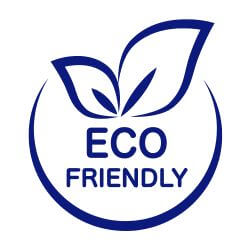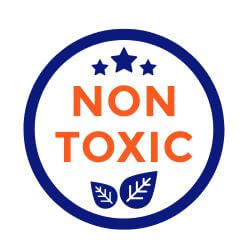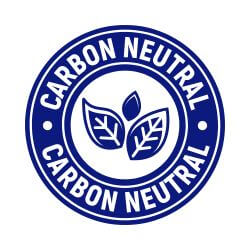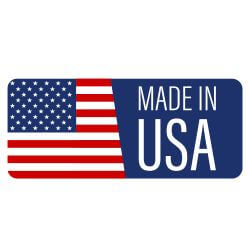As a new parent, ensuring your baby’s comfort and safety is your top priority. One crucial aspect of this is selecting the right bedding for their crib or nursery. Even if you think you've made all the correct choices, there might be hidden dangers lurking in your baby's bedding. Here’s what to look out for when it comes to safe baby bedding.
Understanding Safe Baby Bedding
Before we dive into the signs that your baby’s bedding might not be as safe as you think, let’s establish what safe baby bedding entails. Safe bedding refers to materials that meet safety regulations, provide adequate airflow, and are free from harmful substances. It also includes having an appropriate setup to reduce risks such as suffocation and overheating.
Common Signs That Your Baby's Bedding Might Not Be Safe

Being vigilant about your baby's sleeping environment is crucial. Here are some signs that indicate your baby's bedding may not be safe:
1. Frequent Allergies or Skin Irritations
If your baby is experiencing constant allergies or skin rashes, it could be due to the materials used in their bedding. Check for:
- Harsh Chemicals: Many bedding materials go through chemical treatments that can be harmful to sensitive skin.
- Non-Hypoallergenic Options: Choose natural fibers like organic cotton, as synthetic materials may cause allergic reactions.
2. Poor Quality Materials
If you notice signs of wear and tear, such as fraying or fading, it's time to reconsider your bedding. Quality matters significantly when it comes to safe baby bedding:
- Durability: Bedding should withstand regular washing and handling.
- Breathability: Poor quality materials can trap heat and moisture, creating an unsafe sleeping environment.
3. Unsecured Fitted Sheets
Your baby's safety hinges on how well the fitted sheets fit their mattress. Here are some tips for keeping them secure:
- Check for Elastic: Ensure the elastic bands on the sheets are strong and provide a tight fit around the mattress.
- Avoid Loose Sheets: Loose sheets can bunch up, posing a suffocation risk for your baby.
4. Outdated or Damaged Crib Mattress
A mattress is one of the most critical components of safe baby bedding. If your crib mattress is old or damaged, it should be replaced immediately:
- Check for Sagging: A sagging mattress can't provide proper support and increases suffocation risk.
- Mold or Odor: Any sign of mold or an unpleasant odor indicates that the mattress may not be safe for your baby.
5. The Presence of Extra Bedding
While it may look cozy, adding extra blankets, comforters, or pillows can be dangerous. Keep it minimal:
- One Fitted Sheet: Use only a fitted sheet for bedding; this is considered the safest option.
- No Pillows or Toys: Remove all objects from the crib to prevent suffocation hazards.
What to Look for When Choosing Safe Baby Bedding

Now that you're aware of signs that your baby's bedding may be unsafe, here are some pointers when selecting safe baby bedding.
Certifications and Standards
Always look for bedding that meets safety standards and certifications. Popular certifications include:
- OEKO-TEX: This ensures that the bedding is free from harmful substances and safe for babies.
- Greenguard Gold: Indicates that the product has low emissions, ensuring air quality is not compromised.
Material Matters
Select materials that are breathable, hypoallergenic, and soft. Here are some options:
- Organic Cotton: Soft, breathable, and free from synthetic pesticides and chemicals.
- Bamboo: Naturally hypoallergenic and offers excellent moisture-wicking properties.
Size Matters
Ensure that you’re buying the correct size for your crib or bassinet:
- Crib Mattress: Always choose a mattress that fits snugly in the crib to prevent gaps.
- Fitted Sheets: Ensure that the fitted sheet is designed specifically for the size of your crib mattress.
Creating the Safest Sleep Environment
In addition to choosing the right bedding, setting up the nursery environment is essential for your baby's safety. Here are some tips:
Room Temperature
Maintain a comfortable room temperature to prevent overheating. The ideal temperature for a baby's room is generally between 68-72°F (20-22°C).
Regular Maintenance
Regularly clean and inspect your baby's bedding. Wash fitted sheets weekly, and ensure that no loose threads or fabric are present.
Frequently Asked Questions about Safe Baby Bedding
What is the safest type of bedding for a newborn?
The safest bedding for a newborn is a fitted sheet made of organic cotton or bamboo, placed on a firm, flat mattress in a crib without any additional blankets, pillows, or stuffed animals.
How can I ensure the safety of a used crib mattress?
If you are considering a used crib mattress, make sure to inspect it thoroughly for any signs of damage or mold. It should also be clean and free from any allergens. Ideally, buy a new one that meets current safety standards.
Wrap-Up: Prioritize Your Baby’s Safety with Smart Choices
Your baby's safety is paramount, especially when it comes to their sleep environment. By being observant and making informed choices about safe baby bedding, you can ensure your little one sleeps soundly and safely. Remember, creating a secure sleep space today sets the foundation for a healthy future!








